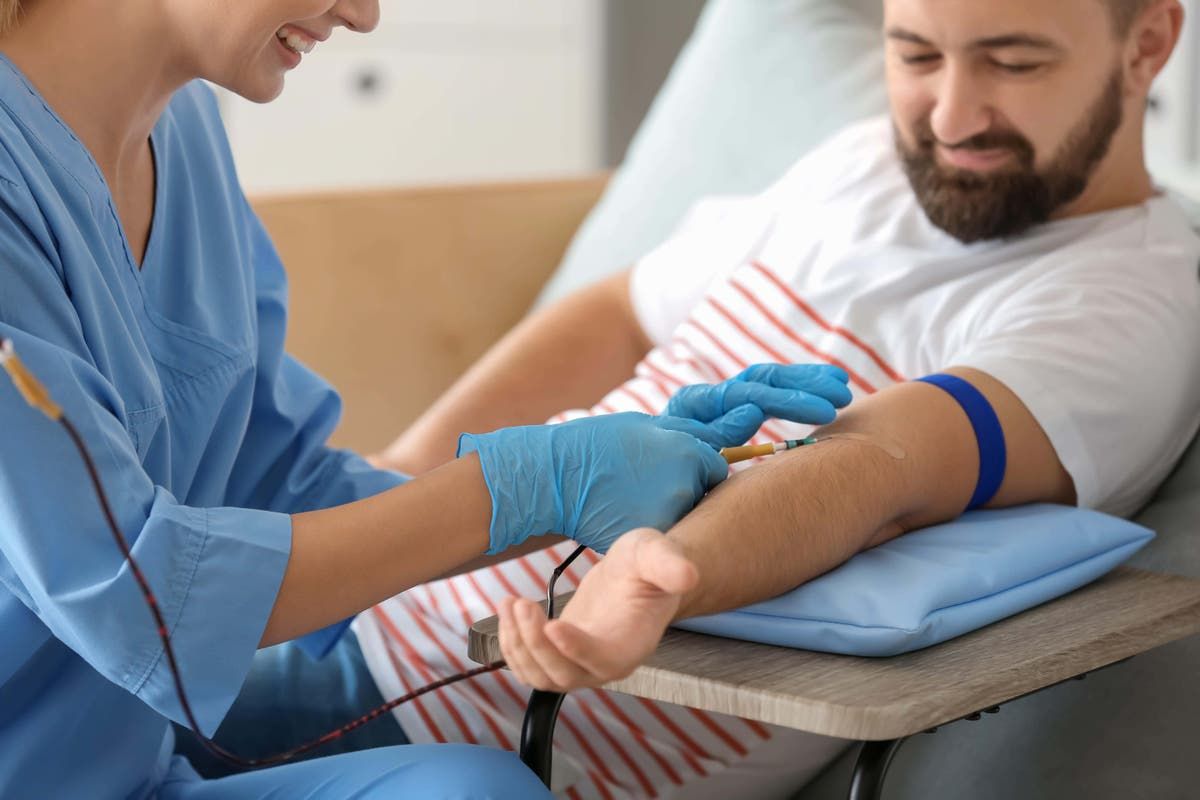The NHS has issued an urgent appeal to blood donors following a cyberattack that hit several major London hospitals last week.
King's College Hospital and Guy's and St Thomas' declared a “critical incident” after the attack on pathology company Synnovis. This outage caused serious IT issues resulting in the cancellation of operations and testing.
Affected hospitals are currently unable to match patients' blood at the same frequency as usual, NHS Blood and Transplant (NHSBT) said, prompting a national appeal for type O blood donors.
Donating blood can seem like a daunting prospect for many people, so we've spoken to some experts to unravel some of the most frequently asked questions on the subject…
What is the criteria for donating blood?
According to the NHS, most people between the ages of 17 and 65 are eligible as blood donors.
The main criteria are being fit and generally in good condition, weighing between 7 kilos and 12 lbs (50 kg) and 25 kilos (158 kg) and having adequate veins. However, those who have or have had cancer, heart conditions or organ transplants are among those who are not eligible to donate.
Additionally, those who have received blood, platelets, plasma or any other blood product after January 1, 1980, have tested positive for HIV, are carriers of hepatitis B or C, or have injected non-prescribed medications, including bodybuilding and injectable tanners. Agents also cannot donate blood.
People who feel unwell during their appointment, are pregnant, or have recently gotten a tattoo or piercing may also be turned away.
Ella Poppitt, lead blood donation nurse at NHS Blood and Transplant (NHSBT), has advised those wanting to donate to keep an eye on the latest online rules as they could change.
“We encourage people of all backgrounds to come to one of our centers to donate blood – it's really rewarding,” Poppitt said.
“It's not something you should fear and it's a great way to give back to the NHS. “A lot of people leave their appointments and say it was a really positive experience for them.”
Why is the NHS specifically looking for type O blood donors?
An appeal has been launched for donors of blood type O because it is known as a universal blood type.
“Hospitals need O negative blood because it is the most common blood type used in emergencies for transfusions when the blood type is unknown, as it can be given to anyone,” NHSBT spokesperson Suzi Browne said.
“O positive is the most common blood type in the UK so there is a huge demand as it is used in most blood transfusions.”
Some people can find out their blood type by looking at their medical history; Otherwise, all blood donors will be informed which one is theirs after their blood has been processed.
What is the blood donation process like?
There are 25 permanent blood donation centers in major towns and cities across the UK which are usually open evenings and weekends. The NHS also runs mobile donation sessions in community venues such as church halls.
According to the NHS, the entire donation process, including preparation and recovery time, takes approximately one hour. Upon entering a donation center, donors must complete a safety screening form and read a consent pamphlet that explains the importance of blood safety.
Poppitt said this is the best time to raise any concerns with waiting staff.
“Our staff is really good at taking care of people throughout the entire process,” he said. “If you are feeling anxious, let them know when you arrive and they will be able to explain the process to ease any anxiety.
“We always provide donors with 500ml of fluid and a snack if needed just before donating blood. “The blood transfusion process removes fluid from the body, so we want to make sure donors stay hydrated.”
Donors are then asked to confirm their name, address and date of birth before the nurse places a cuff around one arm to maintain a small amount of pressure during donation.
They will then find a suitable vein and clean it with an antiseptic sponge. A needle is then inserted into the chosen arm which collects the blood into a blood bag with a unique donor number.
A scale weighs the blood and stops when it reaches 470 ml (or just under half a liter); This process usually takes between five and 10 minutes. After the needle is removed, a sterile bandage is applied and then you will be asked to rest for a while and have at least two drinks and a snack.
“Most people feel fine after donating blood, but if you need to sit down and recover for a while afterward, that's okay too,” Poppitt said.
“Much panic comes from fear of the unknown. Most people say the process is painless and it was not what they expected. Many leave with the good feeling of having helped others.
“All donors are sent a text message telling them which hospital their blood has gone to, which is a really rewarding part of the experience.”
How can I prepare to donate blood?
“We recommend that all donors arrive hydrated and fed before their appointment to maximize their chances of donating successfully,” Browne advised.
“Many people arrive in a hurry, but we encourage them to slow down.”
Poppitt added that donors should also avoid rigorous exercise before their appointment and should not drink a lot of alcohol the morning or night before. You may also want to take it easy immediately after the appointment to give your body time to recover.
For more information, find GiveBlood online and on social media, or visit Blood.co.uk












